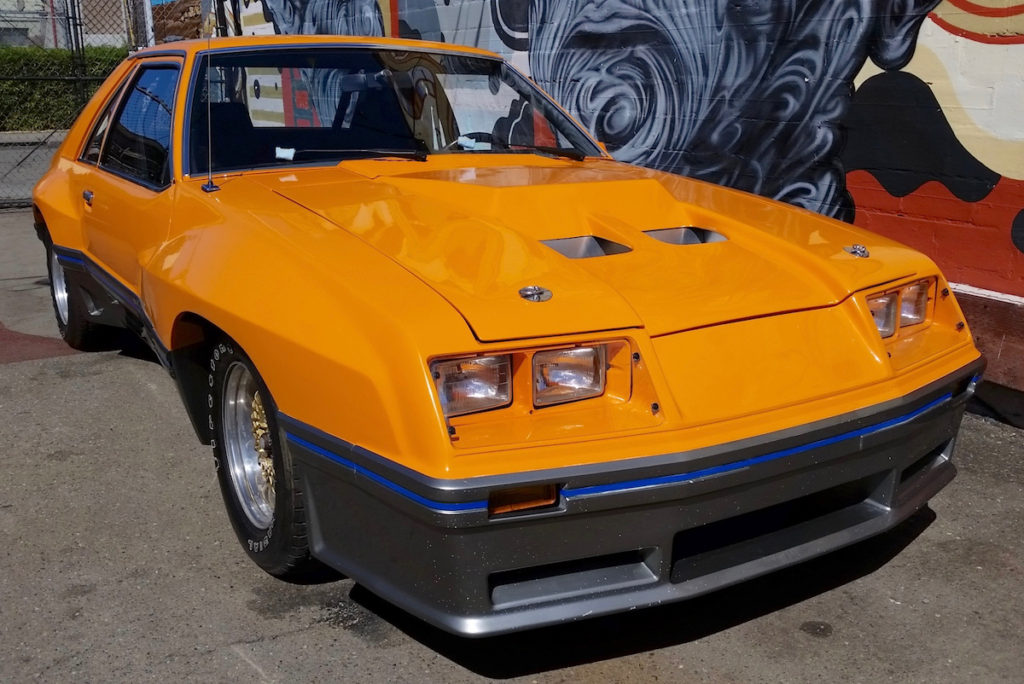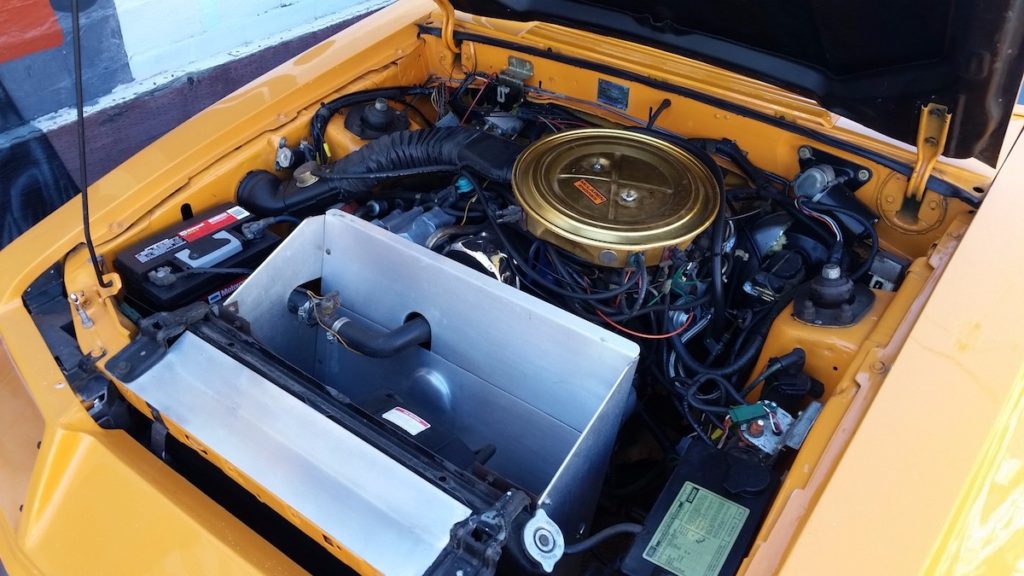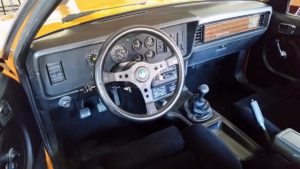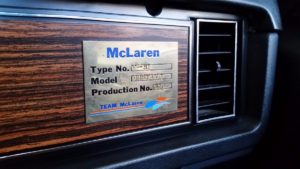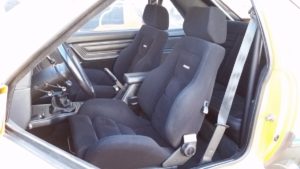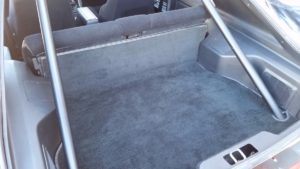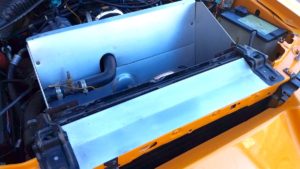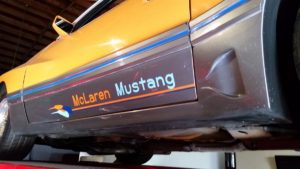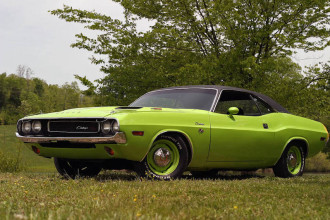photos: BringaTrailer.com
The late-1970s and early 1980s were an interesting time in automotive history. Auto manufactures were dealing with their second oil crisis within a decade, the EPA and CAFE were beating down on the Big Three and AMC to produce more fuel efficient and smog-friendly cars and the country was in a middle of a recession. In addition, the insurance companies caught onto the fact that 16-year olds were driving 400+ horsepower machines and in their eye, it was too much of a reliability — as a result, rates when through the roof any the average middle-class family had moved on from performance.
In just under a decade the country had switched from large, powerful V8 engines that moved 3500-4000 pound behemoths down the quarter-mile in under 13-seconds, to emasculated, downsized ugly boxes that couldn’t move out of their own way. Detroit was going through some tough times and it seemed like it would take a miracle to bring it back.
Fortunately, there were the grassroots tuners who kept us optimistic and provided a real performance alternative to what the Motor City was forced to build. Working in conjunction with a small group of enthusiast engineers (the earliest version of Ford’s Special Vehicle Operations or SVO) companies like McLaren (later referred to as ASC-McLaren) took production models from half-baked mush, and transformed them into hardbodied performance machines.
For those familiar with the McLaren-tuned Fox Body Mustangs, the name may ring a bell. However what you may not know, is that McLaren had modified Mustangs to satisfy the more hardcore enthusiast as far back as 1980, starting with cars like this M81 model.
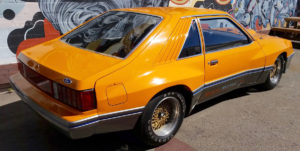 Packing a blueprinted, polished and deburred (by McLaren) turbocharged 2.3L four cylinder engine, with in-car adjustable boost levels from 5-11 psi., the T-3 Garret turbocharger helps achieve a claimed output level of around 175 hp. However, Motor Trend suggests that number is closer to 190 hp and nearly as much torque when the boost cranked up to its full potential. The compression ratio was a very boost-friendly 9.0:1, as well. The turbocharged mill was backed by a 4-speed manual transmission that was fed to a 3.45-gear ratio in the rear.
Packing a blueprinted, polished and deburred (by McLaren) turbocharged 2.3L four cylinder engine, with in-car adjustable boost levels from 5-11 psi., the T-3 Garret turbocharger helps achieve a claimed output level of around 175 hp. However, Motor Trend suggests that number is closer to 190 hp and nearly as much torque when the boost cranked up to its full potential. The compression ratio was a very boost-friendly 9.0:1, as well. The turbocharged mill was backed by a 4-speed manual transmission that was fed to a 3.45-gear ratio in the rear.
Underneath, was upgraded suspension that was a blend of aftermarket and Ford parts bin; fully-adjustable Koni shocks provided less rebound and firmer cornering while a set of Ford Fairmont police-spec sway bars decreased body roll, with the help of tungsten bushings. Remember, the Fairmont shared a platform with the Mustang in those years, so it was a direct bolt-on installation.
These small but effective improvements helped make quite a bit of difference around the road course, while the factory wheels were ditched to far better-looking, wider and incredibly popular for the era BBS mesh wheels, measuring in at 15×8 at all four corners and wrapped in Firestone HPR 255/55 rubber.
Naturally, the stock turbo 4-cylinder Mustang’s brakes would be under-matched for a serous road racing competitor with increased horsepower levels, so SVO and McLaren installed 10.4 front discs and calipers borrowed from the 4.2L V8 Mustang (no 5.0 that year), featuring semi-metallic pads. Larger rear drum brakes were utilized in the rear. Though that may seem laughable now, for the time and the budget they were stuck with, those upgrades were considered to be a huge improvement.
The improvements continued with details found throughout the car; including the body and interior. On the outside, wide wheel flares allowed for wider wheels and a wider track; further aiding its handling prowess and lending casual onlookers a hint that this was no ordinary Mustang. Brake cooling ducts can be found in front of the front and rear wheels, and the front fascia has been modified for improved aero. The hood was replaced altogether; allowing for increased cooling capacity, especially since the front grille had been sealed shut.
Some of our eagle eyed readers will notice the unusual “MUSTANG” rear valance panel that was available through aftermarket retailers backing the day, but the ’80 M81 left the build center with them installed. Also rather unusual, particularly for the time period and the intended us, is the lack of a rear spoiler on the M81. SVO and McLaren provide the Mustang’s merit through wind-tunnel testing, so one can only presume that the boosted ‘Stang faired better without one.
The cockpit is all about function; with a Racemark 14-inch GT steering wheel, a full instrument cluster courtesy of Stewart-Warner gauges, Recaro LS bucket racing seats, a short throw shifter, and a SCCA-regulation roll cage for improved safety and increased rigidity. 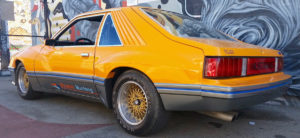
And for performance? Well, it won’t blow you away; with Motor Trend clicking off a 0-60 mph sprint in 9.76 seconds. In the quarter-mile test, the boosted four-cylinder Mustang from 1980 trapped 17.37 at 79.20 mph.
It should be noted that these acceleration tests were complied with the turbo boost setting dialed in at 7-psi, so there was another 4-pounds of boost left on the table, or about another 40-50 hp. We think on a day in perfect conditions at a properly prepped dragstrip, with a good driver and the boost turned up, the car could manage a 15-second timeslip.
Have we mentioned that these cars were rare? McLaren projected a 249-car run of the M81s, unfortunately for them however, only 10 would ultimately be built. Maybe it was the $25,000 sticker price in 1980 that scared of buyers, or perhaps it was too radical-looking for most at the time? Either way, you can have an opportunity to own one, as a M81 has just popped up on the market on BringaTrailer.co! Hurry!

Rick Seitz is the owner and founder of AutoCentric Media, the parent company to Timeless MuscleCar Magazine, and has a true love and passion for all vehicles. When he isn’t tuning, testing, or competing with the magazine’s current crop of project vehicles, he’s busy tinkering and planning the next round modifications for his own cars.








